
Carl August Sandburg was an American poet, biographer, journalist, and editor. He won three Pulitzer Prizes: two for his poetry and one for his biography of Abraham Lincoln. During his lifetime, Sandburg was widely regarded as "a major figure in contemporary literature", especially for volumes of his collected verse, including Chicago Poems (1916), Cornhuskers (1918), and Smoke and Steel (1920). He enjoyed "unrivaled appeal as a poet in his day, perhaps because the breadth of his experiences connected him with so many strands of American life", and at his death in 1967, President Lyndon B. Johnson observed that "Carl Sandburg was more than the voice of America, more than the poet of its strength and genius. He was America."

John Fante was an American novelist, short story writer, and screenwriter. He is best known for his semi-autobiographical novel Ask the Dust (1939) about the life of a struggling writer, Arturo Bandini, in Depression-era Los Angeles. It is widely considered the great Los Angeles novel and is one in a series of four, published between 1938 and 1985, that are now collectively called "The Bandini Quartet". Ask the Dust was adapted into a 2006 film starring Colin Farrell and Salma Hayek. Fante's published works while he lived included five novels, one novella, and a short story collection. Additional works, including two novels, two novellas, and two short story collections, were published posthumously. His screenwriting credits include, most notably, Full of Life, Jeanne Eagels (1957), and the 1962 films Walk on the Wild Side and The Reluctant Saint.

Plymouth Rock is the traditional site of disembarkation of William Bradford and the Mayflower Pilgrims who founded Plymouth Colony in December 1620. The Pilgrims did not refer to Plymouth Rock in any of their writings; the first known written reference to the rock dates to 1715 when it was described in the town boundary records as "a great rock." The first documented claim that Plymouth Rock was the landing place of the Pilgrims was made by old Thomas Faunce in 1741, 121 years after the Pilgrims arrived in Plymouth.
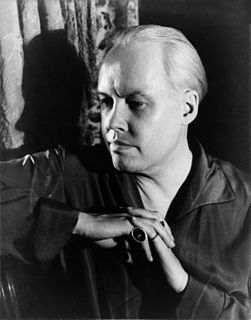
Carl Van Vechten was an American writer and artistic photographer who was a patron of the Harlem Renaissance and the literary executor of Gertrude Stein. He gained fame as a writer, and notoriety as well, for his 1926 novel Nigger Heaven. In his later years, he took up photography and took many portraits of notable people. Although he was married to women for most of his adult life, Van Vechten engaged in numerous homosexual affairs over his lifetime.
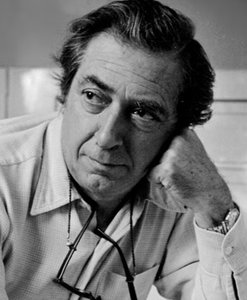
Norman Dello Joio was an American composer whose output spanned over half a century, and who won a Pulitzer Prize in 1957.

Carl Sandburg Home National Historic Site, located at 81 Carl Sandburg Lane near Hendersonville in the village of Flat Rock, North Carolina, preserves Connemara, the home of Pulitzer Prize-winning poet and writer Carl Sandburg. Though a Midwesterner, Sandburg and his family moved to this home in 1945 for the peace and solitude required for his writing and the more than 30 acres (120,000 m2) of pastureland required for his wife, Lilian, to raise her champion dairy goats. Sandburg spent the last twenty-two years of his life on this farm and published more than a third of his works while he resided here.

Julia Peterkin was an American author from South Carolina. In 1929 she won the Pulitzer Prize for Novel/Literature for her novel Scarlet Sister Mary. She wrote several novels about the plantation South, especially the Gullah people of the Lowcountry. She was one of the few white authors who wrote about the African-American experience.

The National Monument to the Forefathers, formerly known as the Pilgrim Monument, commemorates the Mayflower Pilgrims. Dedicated on August 1, 1889, it honors their ideals as later generally embraced by the United States. It is thought to be the world's largest solid granite monument.

Sophie Maslow was an American choreographer, modern dancer and teacher, and founding member of New Dance Group. She was a first cousin of the American sculptor Leonard Baskin.

Land of Unreason is a fantasy novel by American writers Fletcher Pratt and L. Sprague de Camp. It was first published in the fantasy magazine Unknown Worlds for October, 1941 as "The Land of Unreason". Revised and expanded, it was first published in book form by Henry Holt and Company in 1942. It has been reprinted numerous times since by various publishers, including by Ballantine Books in January 1970 as the tenth volume of the Ballantine Adult Fantasy series. An E-book edition was published by Gollancz's SF Gateway imprint on September 29, 2011 as part of a general release of de Camp's works in electronic form.
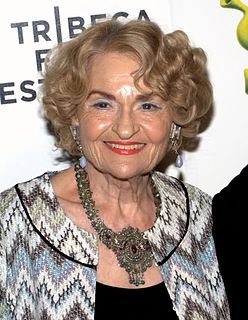
Perry Miller Adato was an American documentary film producer and director and writer. Adato was born Lillian Perry Miller in Yonkers, New York. At age 18 she moved to Greenwich Village. She married Neil M. Adato on September 11, 1955. They had two children, Lauren and Michelle.

The Guns of Navarone is a 1961 epic adventure war film directed by J. Lee Thompson. The screenplay by producer Carl Foreman was based on Alistair MacLean's 1957 novel of the same name. The film stars Gregory Peck, David Niven and Anthony Quinn, along with Stanley Baker, Anthony Quayle, Irene Papas, Gia Scala, James Darren and Richard Harris. The book and the film share the same basic plot: the efforts of an Allied commando unit to destroy a seemingly impregnable German fortress that threatens Allied naval ships in the Aegean Sea.
Carl Sandburg Bibliography
Herbert Mitgang was an American author, editor, journalist, playwright, and producer of television news documentaries.
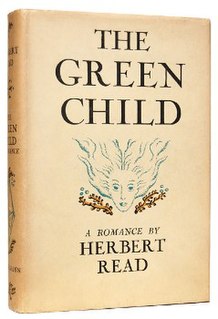
The Green Child is the only completed novel by the English anarchist poet and critic Herbert Read. Written in 1934 and first published by Heinemann in 1935, the story is based on the 12th-century legend of two green children who mysteriously appeared in the English village of Woolpit, speaking an apparently unknown language. Read described the legend in his English Prose Style, published in 1931, as "the norm to which all types of fantasy should conform".

Lois Phillips Hudson was an American academic, editor, and novelist.

Windom's Way is a 1957 British thriller film directed by Ronald Neame and starring Peter Finch and Mary Ure. Made in Eastman Color, it is set during the Malayan Emergency.

Paul Starrett Sample was an American artist who portrayed life in New England in the middle of the 20th Century with a style that showed elements of "Social Realism and Regionalism."
Maurice Reginald (Rex) Hunter was a New Zealand poet, playwright and fiction writer. He is best known for his work as a journalist in America as well as for his marriage to the South Carolina poet Gamel Woolsey in the 1920s and his friendships with writers Carl Sandburg, Ben Hecht, John Cowper Powys, E. E. Cummings and Llewelyn Powys.
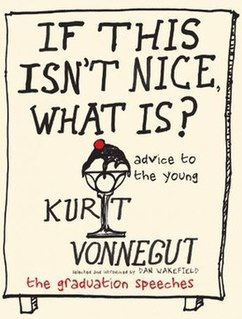
If This Isn't Nice, What Is?: Advice to the Young is a 2013 collection of nine commencement speeches from Kurt Vonnegut, selected and introduced by longtime friend and author Dan Wakefield.


















